Dynamic NFTs represent the next evolution in blockchain-based digital assets, offering capabilities far beyond their static counterparts. Unlike traditional NFTs that remain unchanged after minting, dynamic NFTs can evolve based on external triggers, user interactions, or predefined conditions. This guide will walk you through the complete process of creating dynamic NFTs with evolving traits, from technical foundations to advanced implementation strategies.
What Are Dynamic NFTs?
A dynamic NFT (dNFT) is a non-fungible token that can change its properties based on external factors, with these changes recorded in the token’s metadata. Unlike static NFTs that remain fixed after creation, dynamic NFTs include programmable features that allow them to transform over time or in response to specific triggers.
Key Differences Between Static and Dynamic NFTs
Static NFTs
- Unchangeable metadata after minting
- Single version of a digital asset
- Uses ERC-721 token standard
- Limited interactivity
- Simpler implementation
Dynamic NFTs
- Updateable metadata based on conditions
- Evolving representation of a digital asset
- Often uses ERC-1155 or modified ERC-721
- High degree of interactivity
- Complex smart contract logic
Use Cases for Dynamic NFTs
Gaming Assets
In-game items that evolve as players progress, weapons that gain power with use, or characters that change appearance based on achievements.
AI-Generated Art
Artwork that evolves through AI algorithms, responds to viewer interaction, or changes based on community input.
Real-World Data Integration
NFTs that reflect real-world events, sports statistics, weather conditions, or market prices through oracle integration.
Technical Foundations for Dynamic NFTs
Before diving into implementation, it’s important to understand the technical requirements and tools needed to create dynamic NFTs. The foundation of any successful dNFT project relies on a combination of blockchain knowledge, smart contract development, and off-chain data integration.
Required Skills and Knowledge

Solidity
Smart contract programming language for implementing the core logic of your dynamic NFT on Ethereum-compatible blockchains.
IPFS
InterPlanetary File System for decentralized storage of NFT metadata and assets, ensuring permanence and immutability.
JavaScript
For building frontend interfaces and handling interactions between users, oracles, and your smart contracts.
Essential Tools and Frameworks
| Tool | Purpose | Why It’s Needed |
| OpenZeppelin | Smart contract library | Provides secure, tested implementations of ERC standards and utilities for building robust NFT contracts |
| Chainlink Oracles | External data integration | Connects blockchain with real-world data sources to trigger NFT evolution |
| Polygon Blockchain | Scaling solution | Offers lower gas fees for frequent metadata updates compared to Ethereum mainnet |
| Remix IDE | Development environment | Browser-based IDE for writing, testing, and deploying smart contracts |
| Pinata/NFT.Storage | IPFS pinning service | Ensures your NFT metadata remains accessible on IPFS |
Building Evolving Traits in Dynamic NFTs
The core functionality of dynamic NFTs lies in their ability to evolve over time. This section covers how to implement metadata updates that enable your NFT to change its appearance, properties, or behavior based on various triggers.
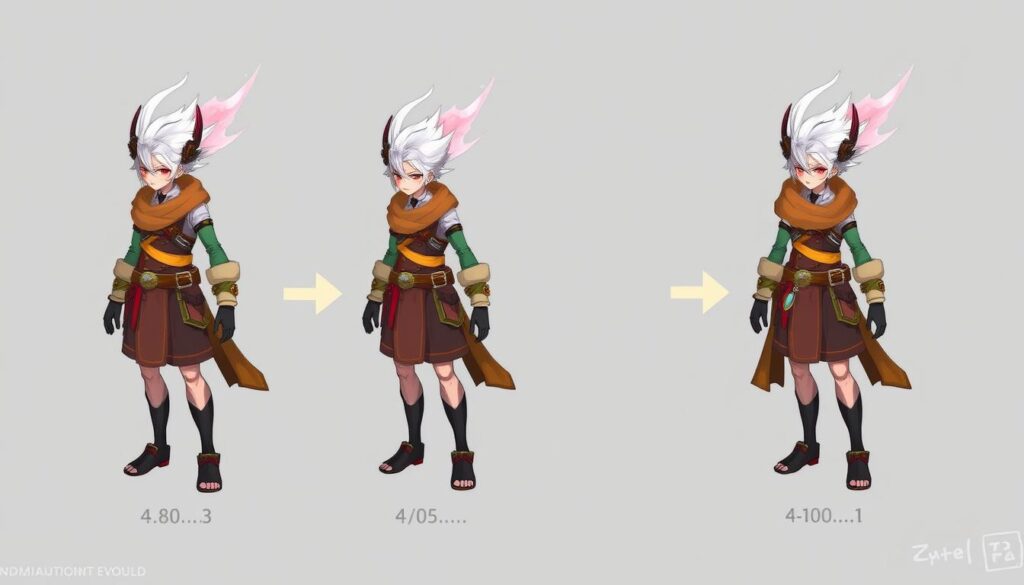
Implementing Metadata Update Functions
The foundation of any dynamic NFT is the ability to update its metadata. This is typically achieved through a function in your smart contract that allows for controlled changes to the token’s URI, which points to the metadata JSON file.
Here’s a basic implementation using ERC-721:
// SPDX-License-Identifier: MIT
pragma solidity ^0.8.0;
import "@openzeppelin/contracts/token/ERC721/extensions/ERC721URIStorage.sol";
import "@openzeppelin/contracts/access/Ownable.sol";
contract DynamicNFT is ERC721URIStorage, Ownable {
constructor() ERC721("DynamicNFT", "DNFT") {}
function mint(address to, uint256 tokenId, string memory uri) public onlyOwner {
_mint(to, tokenId);
_setTokenURI(tokenId, uri);
}
function updateTokenURI(uint256 tokenId, string memory newURI) public {
require(_isApprovedOrOwner(_msgSender(), tokenId), "Not approved or owner");
_setTokenURI(tokenId, newURI);
}
}
Storing and Managing Metadata
For dynamic NFTs, metadata management is crucial. You’ll need to structure your metadata to accommodate changes and store it in a way that allows for updates while maintaining decentralization.
IPFS Metadata Structure
{
"name": "Evolving Character #1",
"description": "A character that evolves with achievements",
"image": "ipfs://QmYx6GsYj8K2gm5f65qAKhnjJVZARPscGk6G3gXZq78VV",
"attributes": [
{
"trait_type": "Level",
"value": 1,
"max_value": 10
},
{
"trait_type": "Experience",
"value": 0,
"max_value": 100
},
{
"trait_type": "Strength",
"value": 5
}
],
"evolution_stage": 1,
"last_updated": "2023-11-25T12:00:00Z"
}
Metadata Update Process
- Create a new metadata JSON file with updated attributes
- Upload the new file to IPFS to get a new CID
- Call the updateTokenURI function with the new IPFS URI
- The NFT now reflects the new metadata and appears changed
Pro Tip: Consider using a consistent naming convention for your metadata files to make tracking evolution stages easier. For example: character1_stage2.json, character1_stage3.json, etc.
Ready to implement evolving traits?
Download our starter template with pre-built metadata update functions and IPFS integration.
Adding Interactivity to Dynamic NFTs
What truly sets dynamic NFTs apart is their ability to interact with users and external data sources. This section covers how to implement user-triggered changes and integrate real-world data through oracles.
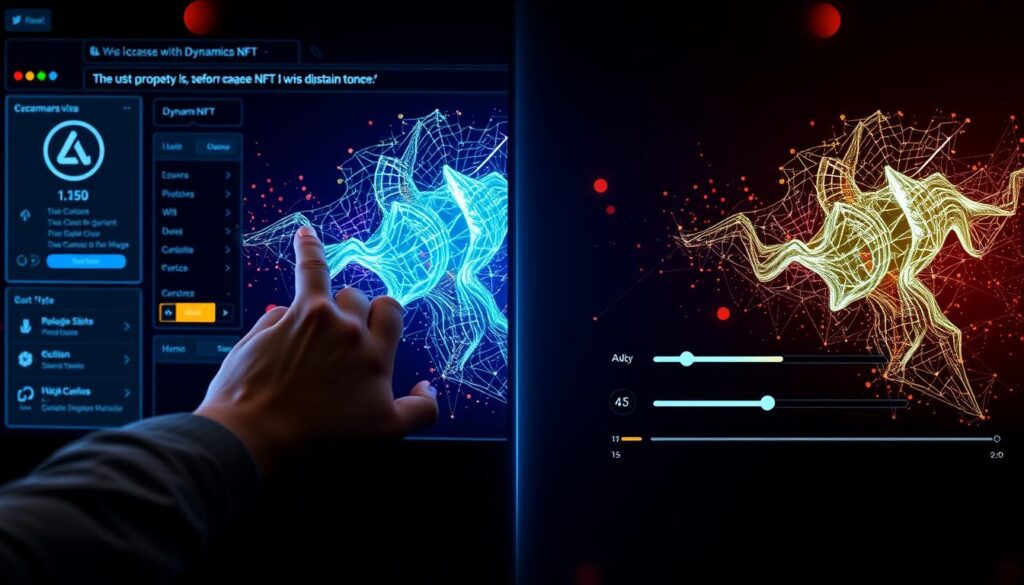
User-Triggered NFT Changes
Allowing users to directly interact with and trigger changes in your NFT creates a more engaging experience. This can be implemented through a combination of smart contract functions and frontend interfaces.
HTML/JavaScript snippet for user interaction:
<!-- HTML Component -->
<div class="nft-interaction">
<img id="nftImage" src="initial-state.jpg" alt="Interactive NFT">
<div class="controls">
<button id="evolveBtn">Evolve NFT</button>
<button id="trainBtn">Train Character</button>
</div>
</div>
<!-- JavaScript -->
<script>
const web3 = new Web3(window.ethereum);
const contractABI = [...]; // Your contract ABI
const contractAddress = "0x..."; // Your contract address
const contract = new web3.eth.Contract(contractABI, contractAddress);
document.getElementById('evolveBtn').addEventListener('click', async () => {
const accounts = await ethereum.request({ method: 'eth_requestAccounts' });
const userAddress = accounts[0];
// Call the evolve function on your smart contract
await contract.methods.evolveNFT(tokenId).send({ from: userAddress });
// Update the UI to reflect changes
const newMetadataURI = await contract.methods.tokenURI(tokenId).call();
const response = await fetch(ipfsGatewayUrl + newMetadataURI.replace('ipfs://', ''));
const metadata = await response.json();
document.getElementById('nftImage').src = ipfsGatewayUrl + metadata.image.replace('ipfs://', '');
});
</script>
Integrating Oracles for Real-World Data
Oracles allow your dynamic NFTs to respond to real-world events and data. Chainlink is the most widely used oracle network for this purpose, providing secure and reliable data feeds for your smart contracts.
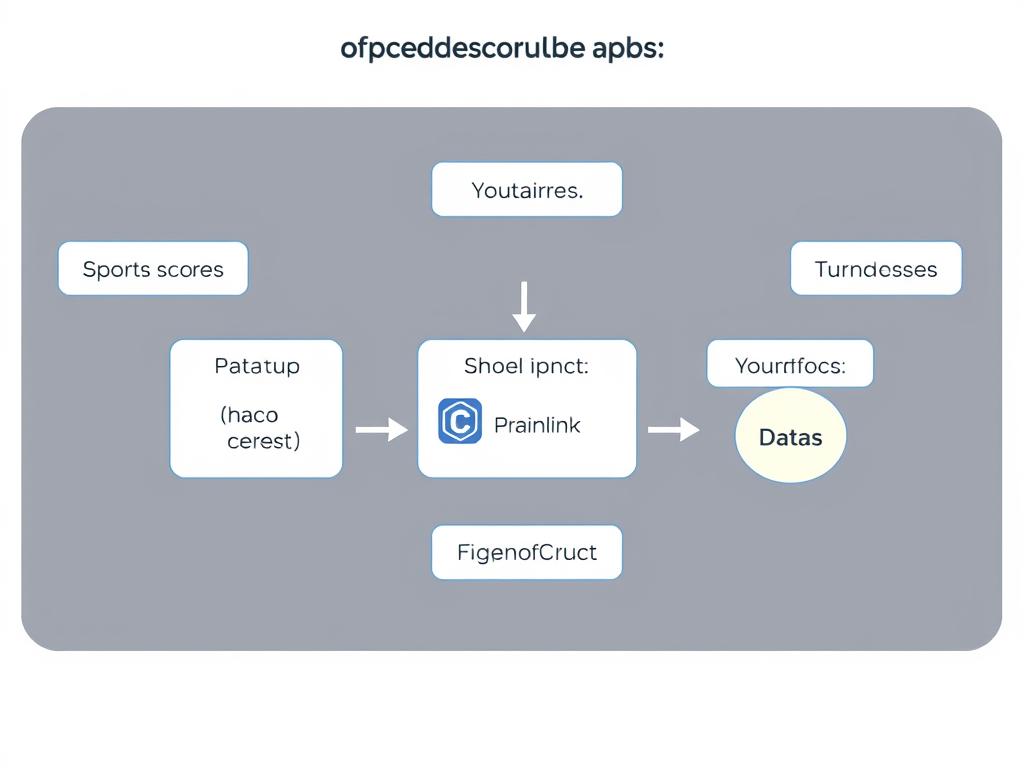
Implementing Chainlink Oracle integration:
// SPDX-License-Identifier: MIT
pragma solidity ^0.8.0;
import "@openzeppelin/contracts/token/ERC721/extensions/ERC721URIStorage.sol";
import "@openzeppelin/contracts/access/Ownable.sol";
import "@chainlink/contracts/src/v0.8/interfaces/AggregatorV3Interface.sol";
contract WeatherResponsiveNFT is ERC721URIStorage, Ownable {
AggregatorV3Interface internal weatherOracle;
mapping(uint256 => uint256) public tokenIdToWeatherState;
// Weather states: 0 = sunny, 1 = rainy, 2 = snowy
mapping(uint256 => string) public weatherStateToURI;
constructor(address _oracleAddress) ERC721("WeatherNFT", "WNFT") {
weatherOracle = AggregatorV3Interface(_oracleAddress);
// Set default URIs for different weather states
weatherStateToURI[0] = "ipfs://QmSunnyImageCID";
weatherStateToURI[1] = "ipfs://QmRainyImageCID";
weatherStateToURI[2] = "ipfs://QmSnowyImageCID";
}
function mint(address to, uint256 tokenId) public onlyOwner {
_mint(to, tokenId);
updateWeatherState(tokenId);
}
function updateWeatherState(uint256 tokenId) public {
require(_exists(tokenId), "Token does not exist");
// Get latest weather data from Chainlink Oracle
(, int256 weatherCode,,,) = weatherOracle.latestRoundData();
// Determine weather state based on weather code
uint256 weatherState;
if (weatherCode = 800 && weatherCode
Enhance your dynamic NFTs with real-world data
Access our library of pre-configured oracle integrations for weather, sports, finance, and more.
Testing and Deploying Dynamic NFTs
Before launching your dynamic NFT project, thorough testing is essential to ensure your smart contracts function correctly and efficiently. This section covers the testing and deployment process using Remix IDE and provides gas optimization tips.
Remix IDE Workflow
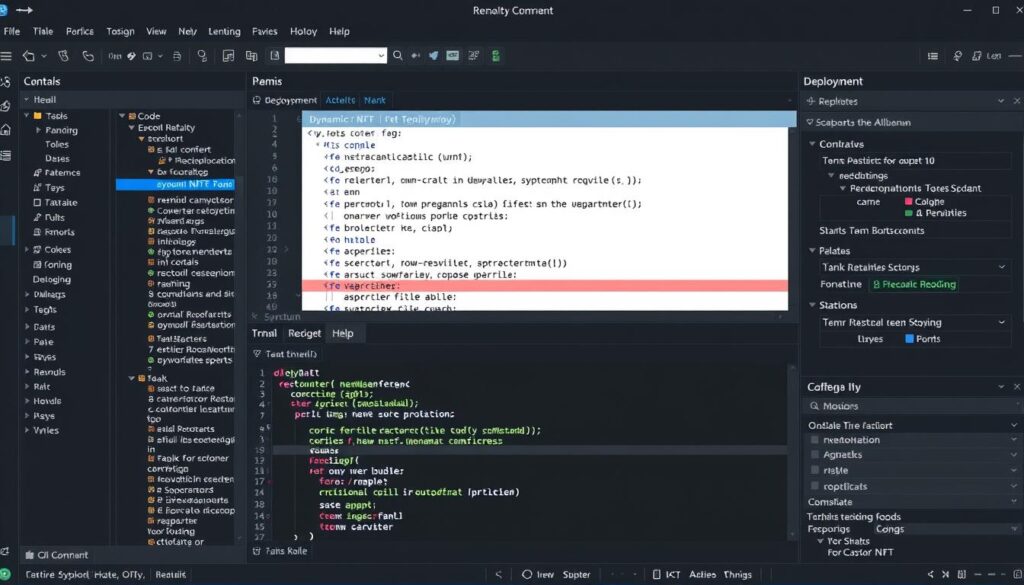
-
Create and compile your contract
Upload your Solidity files to Remix and compile them using the Solidity compiler (0.8.0 or later recommended).
-
Configure deployment settings
Select the appropriate environment (JavaScript VM for testing, Injected Web3 for testnet/mainnet deployment).
-
Deploy the contract
Provide constructor arguments if needed and deploy the contract.
-
Test basic functionality
Mint an NFT and verify its initial metadata.
-
Test update mechanisms
Trigger metadata updates through your contract functions and verify changes.
-
Test oracle integration
If using oracles, verify that external data is correctly processed and triggers appropriate changes.
Gas Optimization Tips for Frequent Updates
Gas Optimization Strategies
- Store minimal data on-chain; keep most metadata on IPFS
- Batch updates when possible instead of updating one token at a time
- Use proxy contracts for upgradability without redeployment
- Consider Layer-2 solutions like Polygon for frequent updates
- Implement efficient storage patterns (e.g., bit packing for small values)
- Use events to track changes instead of storing historical data
Common Gas-Intensive Pitfalls
- Storing large amounts of data on-chain
- Unnecessary loops or complex calculations in update functions
- Frequent small updates instead of batched changes
- Inefficient storage structures
- Redundant state changes
- Storing full metadata history on-chain
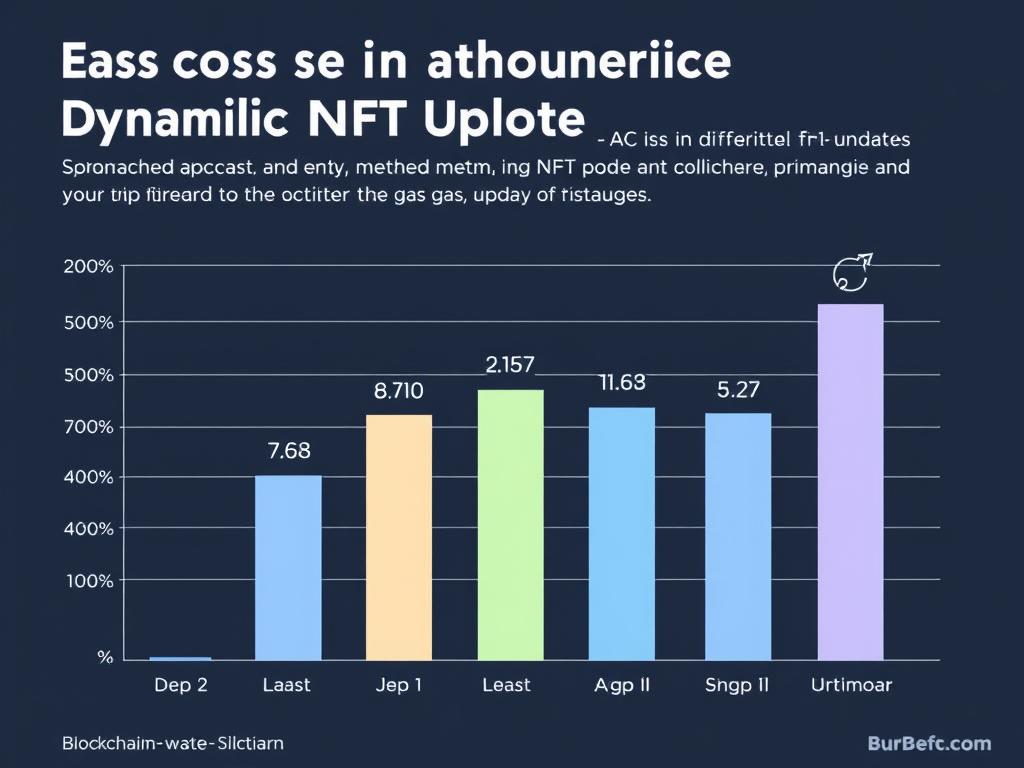
Advanced Implementation Techniques
Once you’ve mastered the basics of dynamic NFTs, you can explore more sophisticated implementation techniques to enhance security, scalability, and functionality.
Multi-Signature Control for Trait Evolution
Implementing multi-signature (multi-sig) control adds an extra layer of security and governance to your dynamic NFTs. This approach requires multiple authorized parties to approve changes before they take effect.
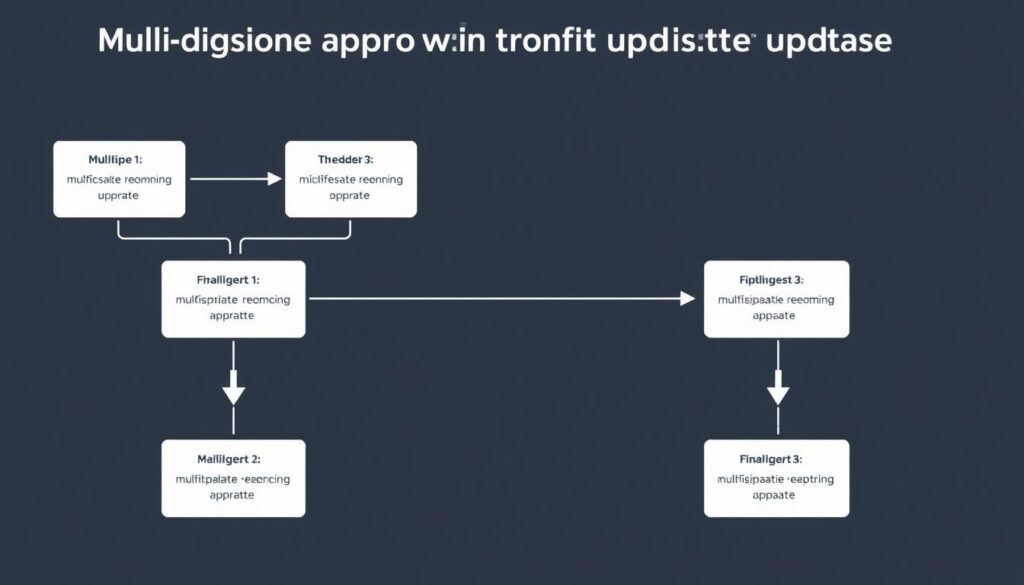
Multi-sig implementation example:
// SPDX-License-Identifier: MIT
pragma solidity ^0.8.0;
import "@openzeppelin/contracts/token/ERC721/extensions/ERC721URIStorage.sol";
contract MultiSigDynamicNFT is ERC721URIStorage {
struct UpdateRequest {
uint256 tokenId;
string newURI;
uint256 approvalsCount;
mapping(address => bool) hasApproved;
}
mapping(uint256 => UpdateRequest) public updateRequests;
uint256 public nextRequestId;
address[] public approvers;
uint256 public requiredApprovals;
constructor(address[] memory _approvers, uint256 _requiredApprovals) ERC721("MultiSigNFT", "MSNFT") {
approvers = _approvers;
requiredApprovals = _requiredApprovals;
}
function proposeUpdate(uint256 tokenId, string memory newURI) public returns (uint256) {
require(_exists(tokenId), "Token does not exist");
uint256 requestId = nextRequestId++;
UpdateRequest storage request = updateRequests[requestId];
request.tokenId = tokenId;
request.newURI = newURI;
request.approvalsCount = 0;
return requestId;
}
function approveUpdate(uint256 requestId) public {
require(isApprover(msg.sender), "Not an approver");
UpdateRequest storage request = updateRequests[requestId];
require(!request.hasApproved[msg.sender], "Already approved");
request.hasApproved[msg.sender] = true;
request.approvalsCount++;
if (request.approvalsCount >= requiredApprovals) {
_setTokenURI(request.tokenId, request.newURI);
}
}
function isApprover(address account) public view returns (bool) {
for (uint256 i = 0; i
Layer-2 Solutions for Scalability
Layer-2 solutions like Polygon, Optimism, or Arbitrum can significantly reduce gas costs and improve transaction speeds for dynamic NFTs that require frequent updates.
| Layer-2 Solution | Advantages | Considerations | Best For |
| Polygon | Low gas fees, high throughput, EVM compatibility | Different security model than Ethereum mainnet | Gaming NFTs with frequent updates |
| Optimism | Strong security inheritance from Ethereum, EVM compatibility | Higher fees than some alternatives | High-value NFTs requiring strong security |
| Arbitrum | Low fees, high throughput, EVM compatibility | Newer ecosystem with fewer tools | Complex NFTs with computational needs |
| Immutable X | Purpose-built for NFTs, zero gas fees | Less flexible for custom functionality | High-volume NFT collections |
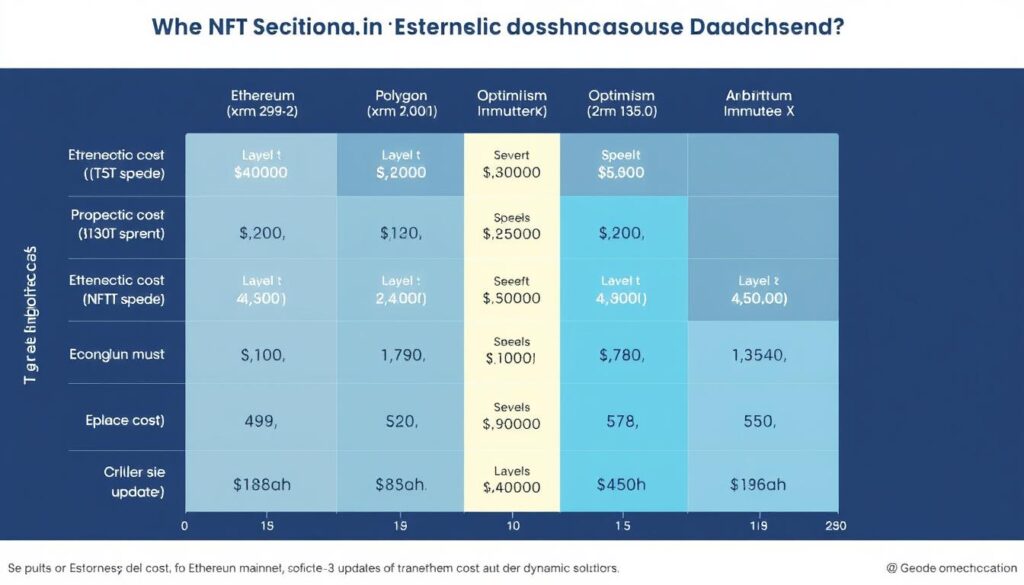
Real-World Dynamic NFT Examples
To better understand the potential of dynamic NFTs, let’s examine three innovative implementations that showcase different aspects of this technology.
Gaming NFT: Evolving Character
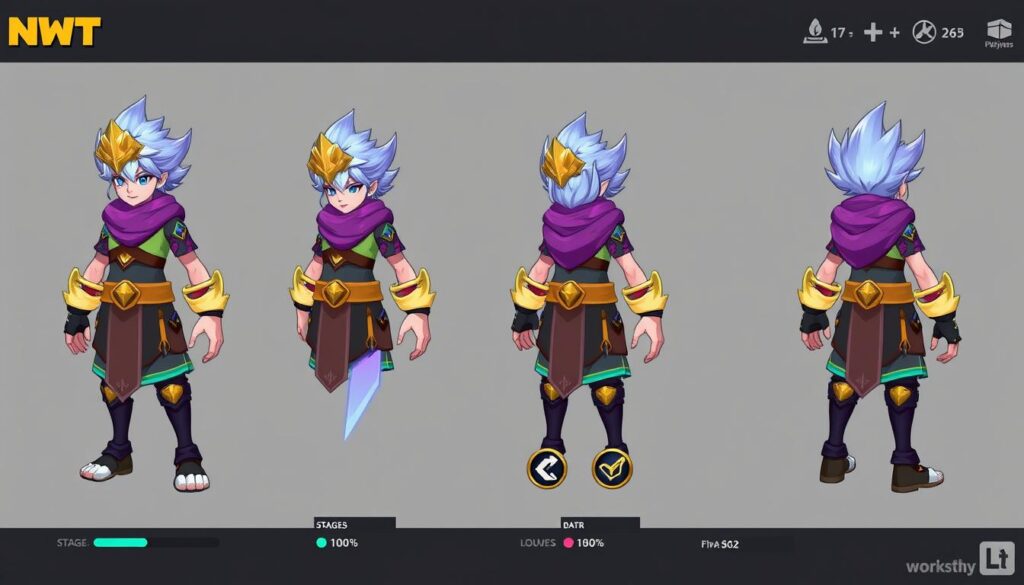
In this example, a gaming studio created character NFTs that evolve based on player achievements. The implementation includes:
- Achievement tracking system that monitors player progress and triggers updates
- Visual evolution with 5 distinct character stages, each with improved attributes
- On-chain verification of achievements to prevent manipulation
- Transferable progress allowing players to sell evolved characters
Key technical feature: The smart contract includes a function that verifies achievement data from the game server using a cryptographic signature before allowing updates.
Climate Data-Driven Artwork NFT

An environmental artist created a collection of dynamic NFTs that change based on real-time climate data:
- Chainlink oracle integration to fetch data from climate monitoring stations
- Visual representation of temperature, air quality, and sea level changes
- Historical tracking allowing viewers to see climate changes over time
- Awareness mechanism where artwork becomes more distressed as conditions worsen
Key technical feature: The NFT uses a deterministic algorithm to transform base layers of the artwork based on multiple data points, creating unique visual representations of climate conditions.
Collaborative AI-Generated Portrait
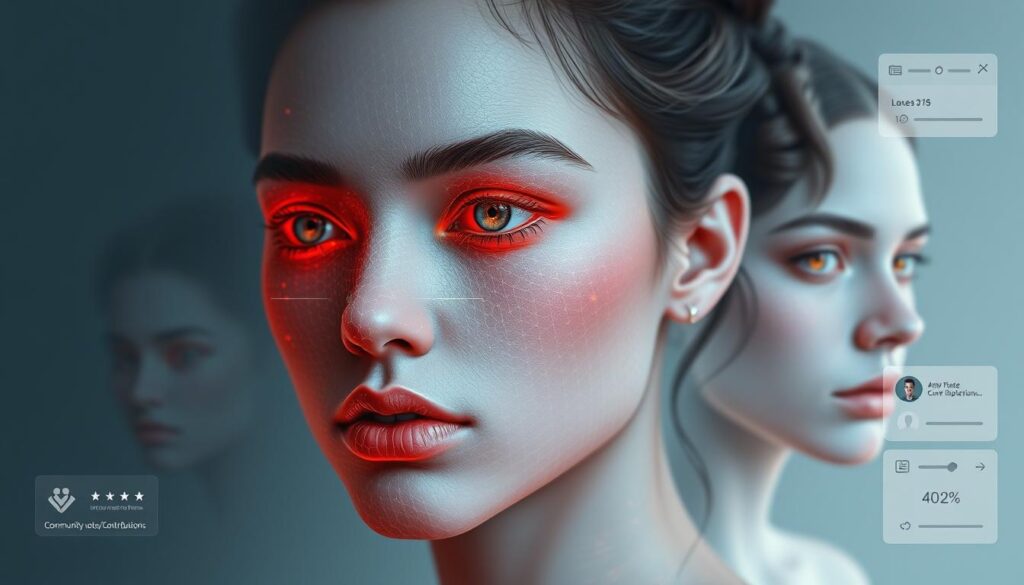
This innovative project combines AI, community participation, and dynamic NFTs:
- Community voting system allowing NFT holders to influence the portrait’s evolution
- AI algorithm that generates new iterations based on votes and previous versions
- Temporal changes where the portrait evolves on a weekly schedule
- Contribution tracking that rewards influential participants with governance tokens
Key technical feature: The project uses a decentralized storage solution that maintains the complete history of the portrait’s evolution, allowing owners to view any previous state.
Troubleshooting Common Issues
When working with dynamic NFTs, you may encounter various challenges. This section addresses common issues and provides solutions to help you overcome them.
Metadata Handling Errors
| Issue | Cause | Solution |
| Metadata not updating | IPFS caching or gateway issues | Use a reliable pinning service and multiple gateways; implement a cache-busting mechanism by appending a timestamp to IPFS URLs |
| Missing attributes after update | Incomplete metadata JSON structure | Always use a complete metadata template and validate JSON before uploading to IPFS |
| Marketplace display issues | Non-standard metadata format | Follow OpenSea or other marketplace metadata standards; test with marketplace API before deployment |
| Image not loading | Incorrect IPFS URI format | Ensure proper formatting (ipfs://CID) and test with multiple IPFS gateways |
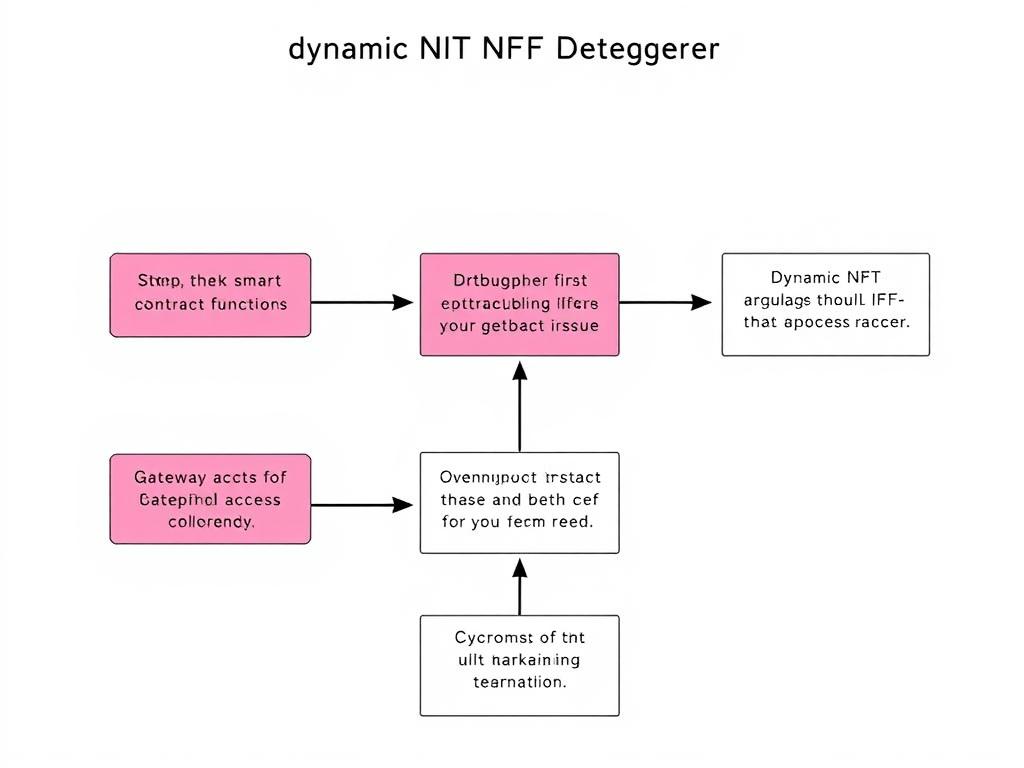
Gas Calculation and Transaction Failures
Why do my update transactions keep failing?
Transaction failures are often due to insufficient gas, especially for complex updates. Try:
- Increasing the gas limit for your transaction
- Simplifying your update logic to reduce gas consumption
- Checking for contract errors with proper error handling
- Verifying that you have the proper permissions to update the NFT
How can I estimate gas costs for frequent updates?
To accurately estimate gas costs:
- Use the eth_estimateGas RPC call before transactions
- Test updates on testnets and monitor actual gas usage
- Calculate monthly/yearly costs based on your update frequency
- Consider implementing gas price oracles for optimal timing
My oracle integration is causing out-of-gas errors
Oracle interactions can be gas-intensive. To resolve:
- Implement a two-step process: request data in one transaction, process it in another
- Optimize your contract to minimize storage operations during oracle callbacks
- Consider using a Layer-2 solution for oracle-heavy applications
- Batch oracle requests when possible instead of making multiple individual calls
Conclusion: The Future of Dynamic NFTs

Dynamic NFTs represent a significant evolution in blockchain technology, expanding the possibilities far beyond static digital collectibles. By implementing evolving traits and interactive properties, creators can build NFTs that respond to user actions, external data, and predefined conditions, creating more engaging and valuable digital assets.
As we’ve explored in this guide, creating dynamic NFTs requires a solid understanding of smart contract development, metadata management, and oracle integration. While the implementation may be more complex than traditional NFTs, the added functionality opens up exciting new use cases across gaming, art, real estate, identity, and many other domains.
The future of dynamic NFTs looks promising as blockchain technology continues to mature and integrate with other emerging technologies like AI, IoT, and extended reality. By mastering the techniques outlined in this guide, you’ll be well-positioned to create innovative dynamic NFT projects that push the boundaries of what’s possible in the digital ownership space.
Start Building Your Dynamic NFT Project Today
Download our comprehensive Dynamic NFT Developer Toolkit with code templates, integration guides, and optimization tools.

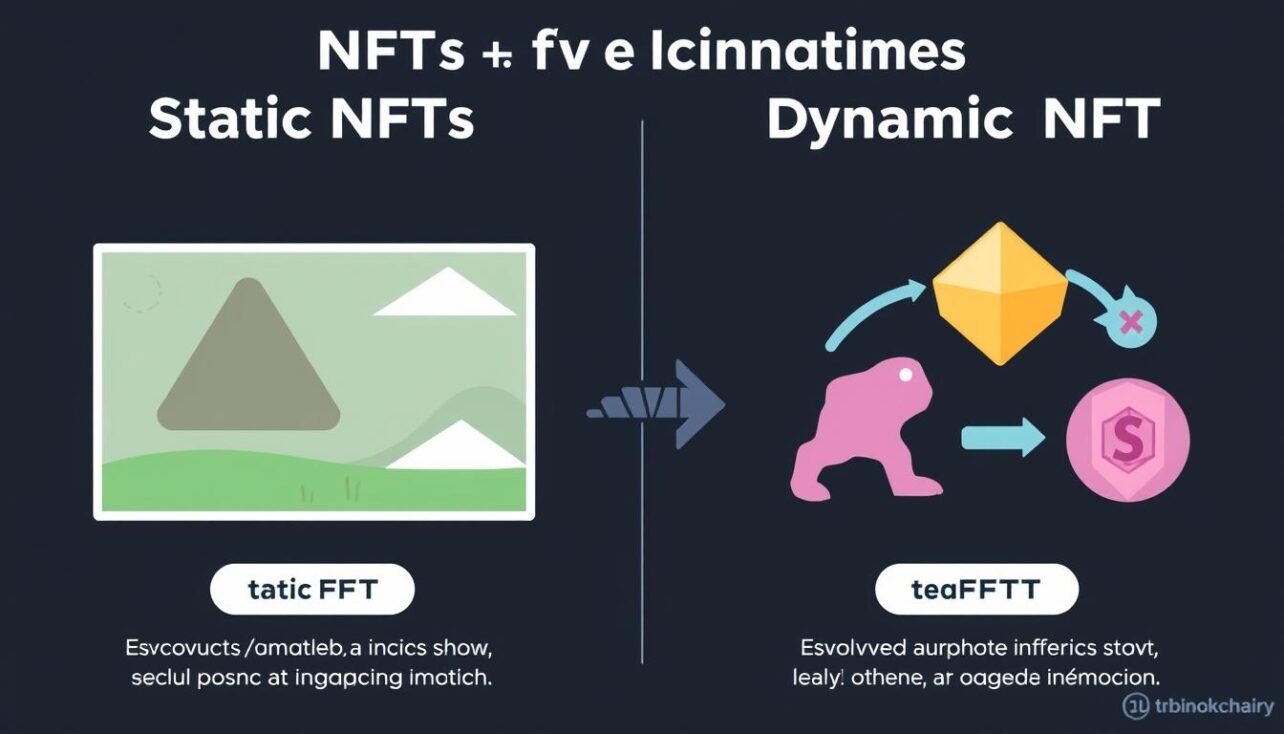
No comments yet